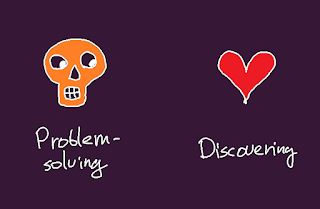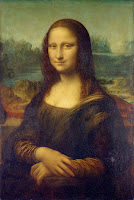A Gap in Mathematics Education
The process of creation of mathematics has the following hierarchically dependent components:
- Coming up with a concept.
- Coming up with a question dealing with a relationship between concepts (this includes formulating a hypothesis, as well as finding an example or a counterexample of a concept/phenomenon).
- Answering a question dealing with a relationship between concepts (this includes proving theorems as well as solving problems without being given the recipe for solution).
- Applying the answer to a question dealing with a relationship between concepts to answer another such question (this includes solving problems by applying a given recipe for solution).
- The teacher proposes one or two concepts that the pupils are familiar with (perhaps, by taking suggestions from the class).
- The teacher then asks the pupils to explain the concepts, helping the pupils in the explanation, when necessary.
- Then, the teachers asks the pupils to think of a question that would combine the named concepts. The teacher helps in this process.
- After this, the teacher and the pupils engage in answering the question together.
- If the question is too hard to answer, it should be concretized to a simpler question. If the question is too easy to answer, it should be abstracted to a more difficult question.
Metaphysics of Human Function based on a Mathematical Structure
work in progress
I propose here a theory of human function, which I have been developing based on introspection. In this theory, human function is represented in terms of exchange of information of four agents, which I call the spirit, the mind, the soul and the body. Although these are surely familiar terms, having a variety of scientific, pseudo-scientific, religious, philosophical and other usage, I do not assume any insight derived from such usage. The essence of each of these agents will be revealed through the roles that they play in human function. Matching of this essence with any of the existing definitions of these entities is unintentional and may well be coincidental.
The four agents are organizes in the following directed graph:
We call it the Human Function Scheme (HFS for short). The arrows represent directions of information flow from one agent to another.Postulate 1. Human function is marked by internal information processing within each of the four agents as well as exchange of information along the arrows of HFS.
Postulate 2. When a human being is engaged in a particular activity, information flows between the agents in consistent cyclic patterns. Change of activity may change these patterns.
Postulate 3. These cyclic patterns are made of three fundamental ones - the three cycles of HFS.
The cycles referred to in Postulate 3 are:
Whatever we claim to perceive consciously, is information processed in the Spirit. There are two arrows going into Spirit. Information flowing from Body to Spirit is the sensory ingredient of human's conscious perception. Information flowing from Soul to Spirit is the non-sensory ingredient human's conscious perception, such as thoughts, logical essence, etc. Rigorous research is needed to be able to develop a more refined distinction between these two ingredients of our conscious perception. We will hitherto distinguish them using the terms concrete perception (for Body to Spirit) and abstract perception (for Soul to Spirit).Noetherian Forms
Link to a plenary talk on noetherian forms at a BRICS conference (2021): slides of the talk, recording of the talk.
Link to a talk on noetherian forms at the PALS seminar (2020): written summary, recording of the talk.
Noetherian forms are mathematical structures defined by self-dual axioms, that include all lattices, Janelidze-Marki-Tholen semi-abelian categories and Grandis exact categories. They can be seen as a realization of Saunders Mac Lane's hypothesis from his 1950 paper on Duality for Groups that self-dual axioms can be found to treat isomorphism theorems for non-abelian groups, as this is realized for abelian groups with the notion of an abelian category. Abelian categories are actually given by the overlap of semi-abelian and exact categories.
The term "noetherian" refers to the fact that these forms can seen as a fulfilment of Emmy Noether's program to "disregard the elements and operations in algebraic structures in favor of selected subsets, linked to homomorphisms between structures by the homomorphism and isomorphism theorems" - quote from Colin Maclarty's article.
See this list for relevant papers in this research area.
Work in progress and current conjectures / open questions regarding noetherian forms:
- Noetherian forms found for the category of sets - a paper on this is in preparation. Conjecture: these forms are present already for an arbitrary topos.
- The category of Hilbert spaces and continuous linear maps is an additive category, but not an abelian category. Conjecture: it nevertheless admits a noetherian form. Question: if there is indeed such noetherian form, is it of any use for quantum mechanics / quantum field theory?






